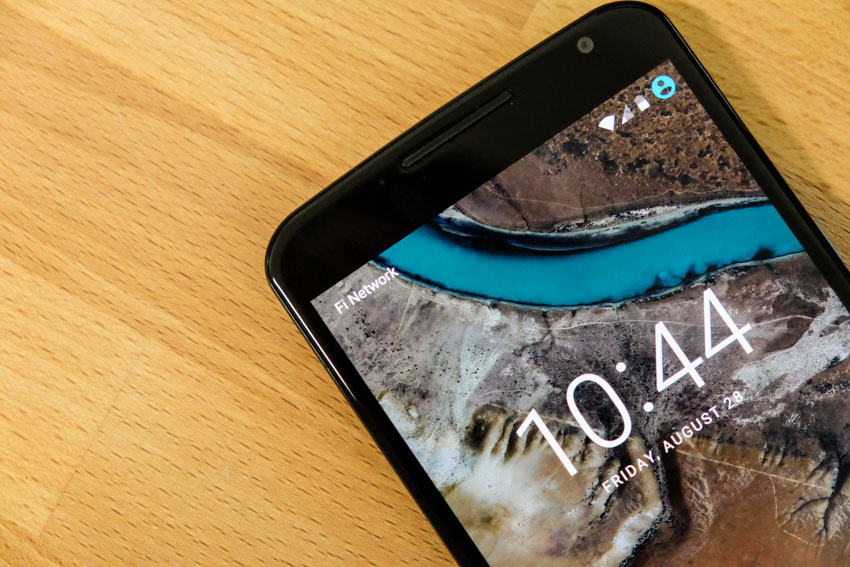I had high hopes for Google’s (GOOGL) ambitious plan to turn our current wireless carrier model on its head with Project Fi.
For those out of the loop, Project Fi is Google’s new wireless service that offers consumers cheap wireless plans by providing them data, phone and text services from Wi-Fi, T-Mobile and Sprint (S). Subscribers who sign up for the service are able to take advantage of a service that switches between the carriers’ LTE and Wi-Fi networks when needed.
When Google first launched the service I was incredibly optimistic about it. However, after using the service for the last three weeks, I’ve been forced to lower my expectations. Its pricing is disruptive, but it turns out in the end I still have to worry about carrier coverage.
Project Fi’s pricing model is exactly what I was hoping for. The plan charges users a base price of $20 a month for unlimited text and talk and $10 for every gigabyte of cellular data. Any unused data at the end of the month is simply credited back to a customer’s account.
The Fi website uses the following example: “If your data budget is 2GB and you use 1.265GB, you’ll get a $7.35 credit.” The credit amount is roughly one cent for every unused megabyte. AT&T’s currently rollover data plan can’t compare to this.
Unlike other carriers, if you go over your data plan Fi won’t slow down your connection or add an additional charge to your account. You only pay for what you use; take note wireless carriers. Project Fi is showing the competition how to make (and more importantly keep) customers happy.
Project Fi’s support team was helpful throughout the setup process, which was a nice change from the less-than-stellar customer service I’ve encountered in the past with other carriers.
Pricing aside, my overall experience with Fi has been somewhat mixed. My hopes of forgetting about carrier coverage were quickly dashed when Sprint refused to activate my Fi SIM card. It took a total of two weeks before the issue was resolved because the Fi team had to wait for Sprint to locate and fix the problem on their end. Unfortunately, during that process I was left with a phone that only connected to Wi-Fi and T-Mobile; and the latter has horrible coverage in my area.
Although, it was blessing in disguise, in a way, since I was forced to test the service’s Wi-Fi capabilities for sending text messages or conducting calls, and can happily report it worked without issue during that time.
With my Fi service now working on all three fronts, I’ve been able to test Wi-Fi to cellular handoff when on a call, only to consistently experience delays (roughly 5 to 7 seconds) as the device switches between networks. There’s work to be done here; the handoff should be seamless, and something that goes unnoticed.
Often early adopters are forced to sacrifice something in order to take part in a new service that’s pushing boundaries and, in this case, Fi is no different. Consumers can expect to sacrifice device variety in order to take advantage of the company’s cheap plans.
The service is currently only available on one device and a gargantuan one at that: Google’s Nexus 6. Google typically updates its Nexus device in the fall, which means we’re likely only a couple of months away from some new, and I’d assume, Project Fi compatible, devices. This year it appears there are two different devices in the fold.
The longer I used Fi, the more I became annoyed with the thought of my wireless carrier also playing the key role of device manufacturer. When your carrier is Verizon or AT&T, you’re able to walk into a store and select between multiple devices made by various companies and pick what works best for you. You can even switch after a few months if you change your mind.
With Project Fi, you pull up a web page and are told, “Here’s your device. Don’t like it? You can’t use our service.”
Even so, Project Fi is still young and device selection is bound to get better. And to Google’s credit, the company set expectations early on about Project Fi being a test bed for bigger ideas in hopes of expanding carrier adoption.
Is it worth paying a monthly fee to be a guinea pig? That’s something you’ll have to decide.
Sign up for Data Sheet, Coins2Day’s daily newsletter about the business of technology.
